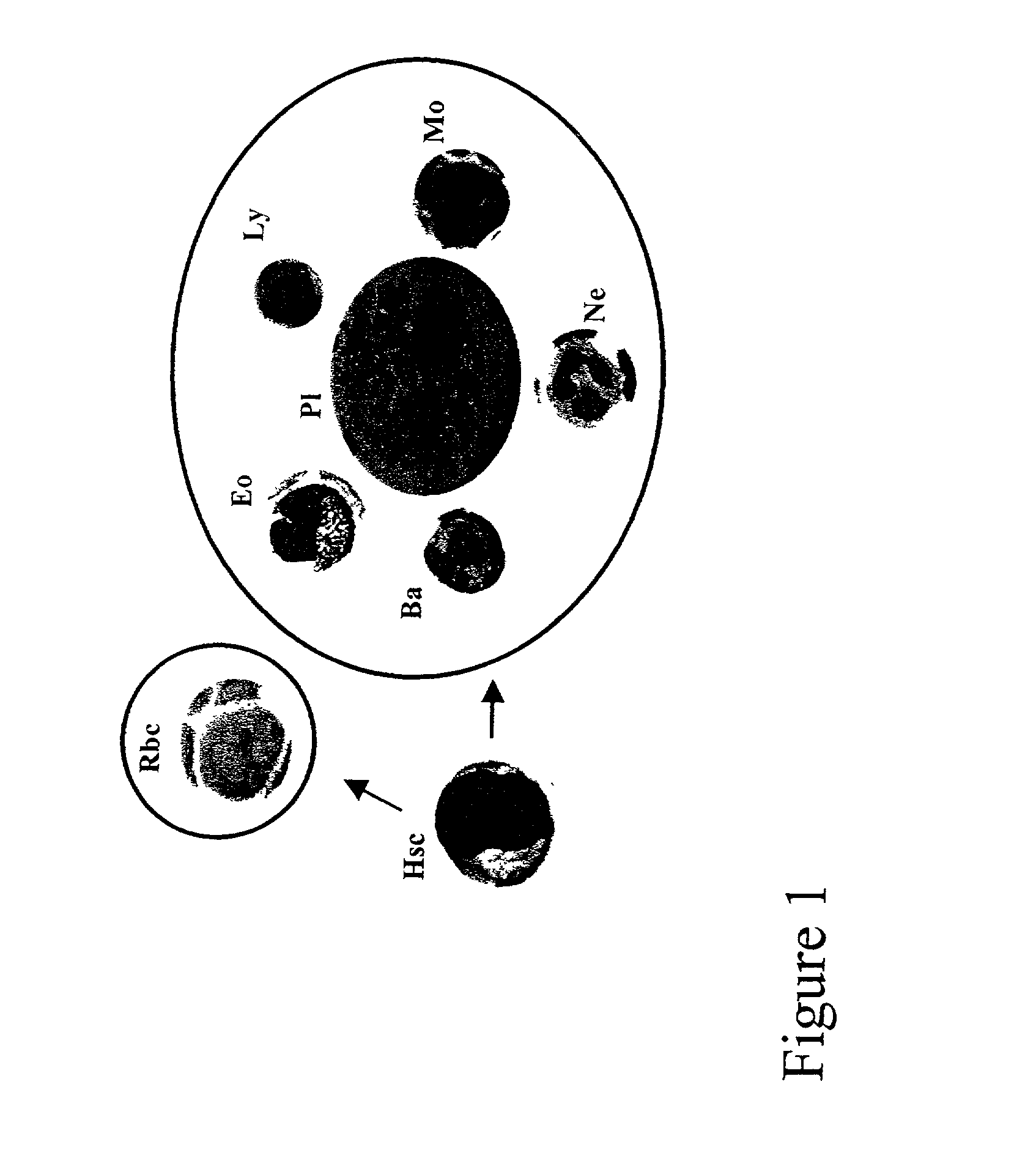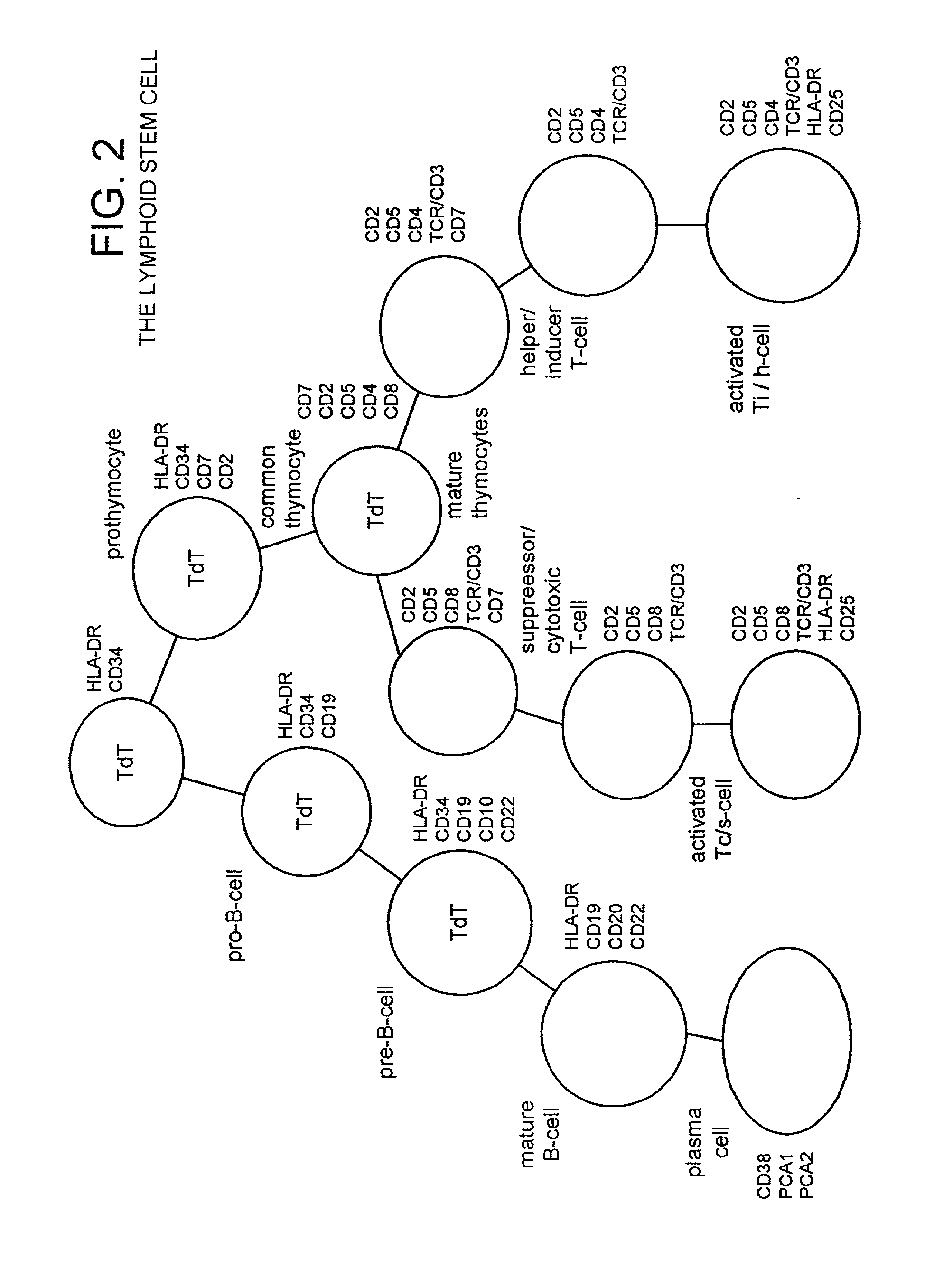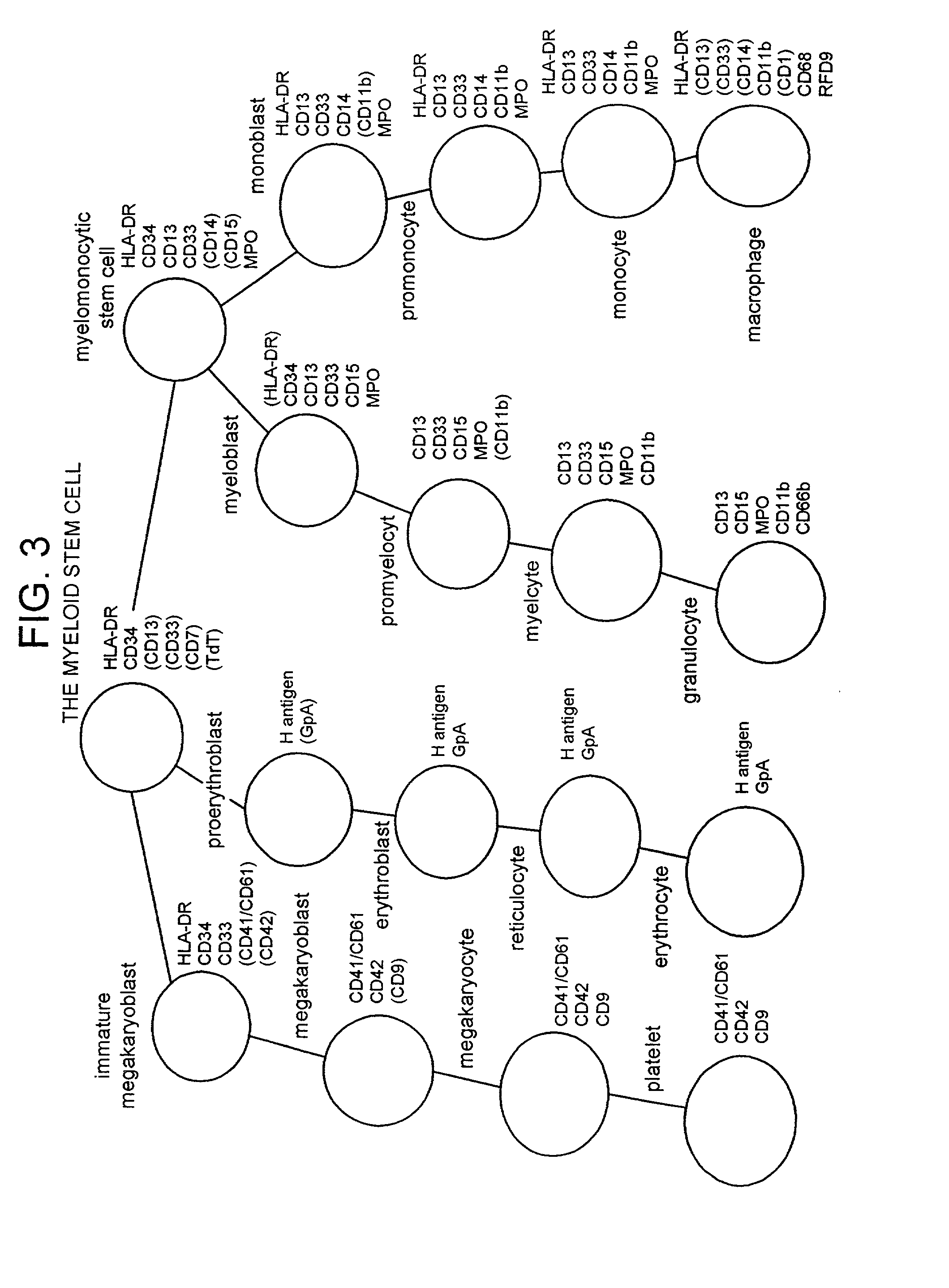Method of preparing an undifferentiated cell
a technology of undifferentiated cells and cells, applied in the field of undifferentiated cells, can solve the problems of difficult to obtain permanent class lines from resting adult hepatocytes, unable to redifferentiate and the vast majority of prior art retrodifferentiated cells were incapable of redifferentiating to a more committed cell
- Summary
- Abstract
- Description
- Claims
- Application Information
AI Technical Summary
Benefits of technology
Problems solved by technology
Method used
Image
Examples
example 2
[0528] Production of Pluripotent Undifferentiated Stem Cells from Adult Peripheral Blood.
[0529] (A) Introduction
[0530] Normally, undifferentiated Totipotent stem cells are not found in circulating blood. Herein, we show that enriched mononuclear fractions obtained from buffy coat of healthy volunteers can be converted into neuronal, cardiac haematopoietic, or endothelial cells as a result of exposing primary cultures to the monoclonal antibody (mab) CR3 / 43. Time-courses during the cell culture procedure showed initially that there was a reversion of a significant proportion of the treated cell population towards the immature phenotype. This was marked by gradual loss of leukocyte-specific antigens such as CD45, CD19, and CD3 with a transient re-expression of the OCT-4, nestin, and CD34 stem cell markers. These events were followed by progressive transdifferentiation of the cultured cells into those having a more mature neuronal phenotype, as marked by an increase in the expression o...
PUM
| Property | Measurement | Unit |
|---|---|---|
| temperature | aaaaa | aaaaa |
| temperature | aaaaa | aaaaa |
| concentration | aaaaa | aaaaa |
Abstract
Description
Claims
Application Information
 Login to View More
Login to View More - R&D
- Intellectual Property
- Life Sciences
- Materials
- Tech Scout
- Unparalleled Data Quality
- Higher Quality Content
- 60% Fewer Hallucinations
Browse by: Latest US Patents, China's latest patents, Technical Efficacy Thesaurus, Application Domain, Technology Topic, Popular Technical Reports.
© 2025 PatSnap. All rights reserved.Legal|Privacy policy|Modern Slavery Act Transparency Statement|Sitemap|About US| Contact US: help@patsnap.com



